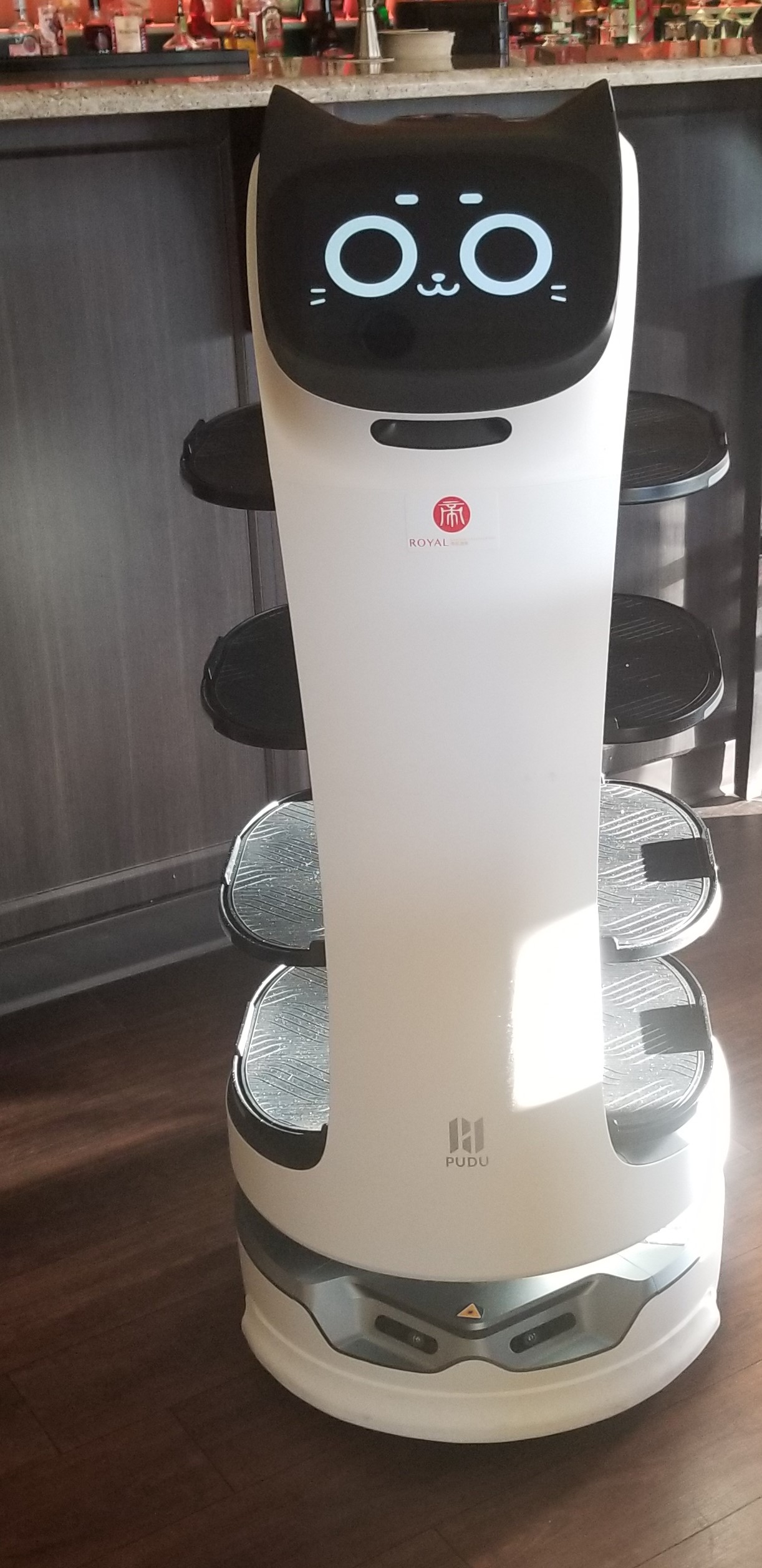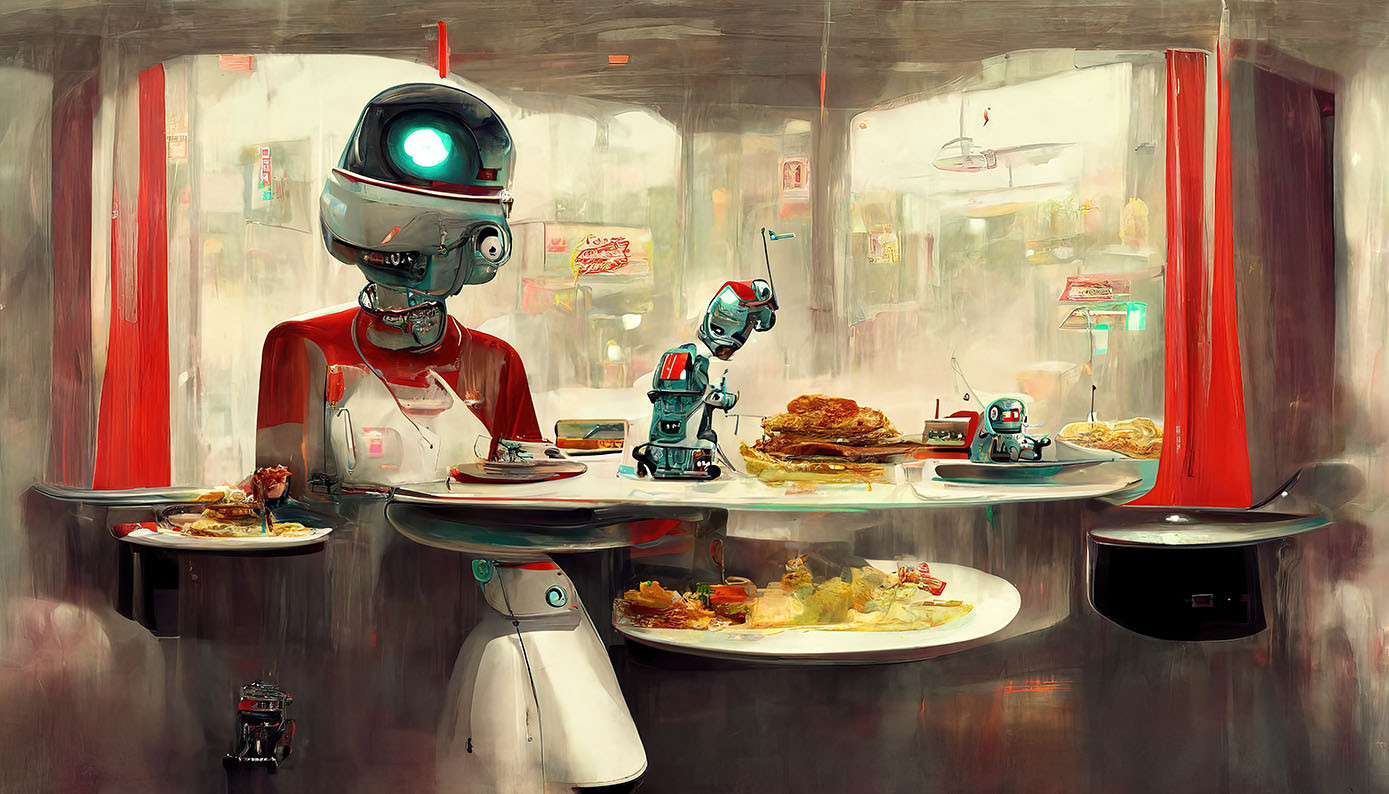Back to the Future in BC Restaurants
At Royal Garden Restaurant in Vernon, B.C., Bella is an ideal employee. She never complains and is always pleasant to customers. She is a product of the pandemic and a result of the increasing difficulties proprietors are finding in staffing their restaurants. Bella may be a robot, but she takes the pressure off overworked staff, which, in turn, helps the restaurant stay open.
A helping hand
Resembling a small bookcase on wheels, Bella has four shelves, each large enough to carry two medium-sized plates. Humans input instructions on her touch-screen light detection and ranging technology (LIDAR) which guides her to her destination with the help of a pre-progammed map and sensors placed throughout the restaurant. Her rechargeable battery pack keeps her running for several hours and gives her independence to navigate the restaurant on her own, something Susie Low, owner of Royal Garden Restaurant, says makes a huge difference.
If a group of six comes in, it would take a server two trips to run the food from the kitchen to the customer’s table, but Bella can deliver it all in one trip. Her lasers detect when the food has been removed from the shelves, and this tells her to return to the kitchen for the next order.
But what makes Bella special is her ability to interact with customers. Her large touch screen resembles a cat, and when people rub the knobs on her head, it triggers sensors that make her purr, Low says.
Ian Tostenson, president and CEO of the British Columbia Restaurant and Foodservices Association, thinks robots could significantly improve the current labour shortage in B.C.’s restaurant industry. But he’s also quick to point out they aren’t a replacement for a human worker.
Traditionally, restaurants, bars and pubs employed approximately 190,000 people. Public health regulations during the first two years of the pandemic meant many were forced to operate at half capacity and consequently lay off staff. Now that things are returning to normal, people haven’t returned to their old jobs, and he estimates an overall labour shortage within the industry of approximately 30,000. Some restaurants have closed and others are operating at reduced hours because they can’t get staff. Robots, he says, can do simple tasks that free up humans for other jobs that require more customer interaction.
Not just about money
Liang Yu, president of Edmonton-based GreenCo Robots, has been supplying B.C. restaurants with ’bots. He points out that not only do they help with staff shortages, they save money. GreenCo will sell a robot outright for $29,000 or facilitate monthly lease payments of approximately $1,000, the equivalent of $33 a day.
Although Yu says robots can save restaurants money in staffing costs, that is is not why robots can make an impact. He compares them to the introduction of industrial dishwashing machines. People used to be employed to do dishes by hand in restaurants, but automation made the task redundant. It didn’t eliminate jobs, he says; instead it freed people up for more interesting work.
Nothing’s perfect
Calvin Lee, staff recruiter for Dinesty Dumpling House, isn’t convinced. Current labour shortages propelled him to buy the robots for his Burnaby restaurant and at the Gilbert Road location in Richmond. But, as he’s discovered, they need to be loaded and unloaded by humans and haven’t reduced the staff’s workload.
Ruby Onggomuljono, manager at Golden Swan Restaurant on Victoria Drive in Vancouver, admits it took time for the restaurant’s human staff to become comfortable working with a robot. But, after learning how to incorporate it into the team, they’ve come to see it as a helping hand to better serve customers. “It’s not perfect, and sometimes it gets stuck in a corner or bumps into something, but we just turn it around and send it on its way,” she says.
Supplied by Ren Robots in Richmond B.C., Golden Swan’s robot was a way for the company to promote its product and the restaurant to attract customers during a time in the pandemic when no one felt comfortable going out to eat. It worked. Customers, especially kids, fell in love with the idea. Parents call the restaurant to ask if the robot is going to be working before they come, not wanting to disappoint the little ones if it’s not, Onggomuljono says.
Robots in B.C. restaurants are few and far between for now. But is it a growing trend? Tostenson thinks so and says they eventually could become commonplace in restaurant experiences from casual to fine dining. If Royal Garden’s Low has any say in it, they’re not going anywhere. She’s been dreaming about another to bus tables and keep Bella company.






